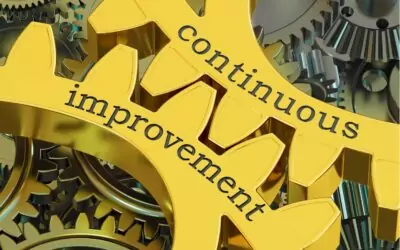As leaders, we are responsible for meeting the goals of our key stakeholders, whether customers, upper management, or owners. As a result, many leaders we speak with are concerned about the productivity of their teams as they are forced to work remotely. The data shows, however, that remote-based work may be a benefit to organizations, and making the move will likely help accomplish these goals.
According to the Business Daily News, remote employees work 10 minutes more per day, 1.4 more days per month, and 17 more days per year compared to in-office employees. Not only do they put in more time, but they put in more valuable time. Remote employees achieve 10 more minutes of productivity per day in comparison to in-office employees. When analyzing distractions, only 15% of remote employees felt their boss distracted them from their work compared to 22% of in-office employees. Equipping employees with the right tools and systems could allow organizations to achieve more with the same amount of resources.
If getting more hours out of the team alone isn’t convincing enough, the impacts on overall engagement will be. There are strong correlations between the level of trust present in an organization and the amount employees who are allowed to work remotely. Employees at high trust organizations experience 106% more energy when working, 50% better productivity, and 76% higher engagement. According to a Gallup analysis, employees with higher levels of engagement produce better outcomes, treat customers better and attract new ones, and are more likely to remain at organizations than employees who are less engaged.
Along with the tangible benefits associated with better outcomes, customer retention, and growth, companies also save costs by retaining employees. According to a study by the Society for Human Resource Management (SHRM), it costs an average of $4,129 and takes 42 days to fill a position. This is for filling a new position. The SHRM suggests it takes up to 50-60% of an employee’s annual salary to find a direct replacement, a cost that could potentially be avoided with better employee engagement and less turnover. Allowing employees to work remotely not only contributes to higher productivity and better capability to meet organizational goals, but it also reduces HR costs for the organization. It is a win-win for both the organization and the employee.
After doing business with remote teams around the world there is one simple thing I have learned – people are people no matter where you go. People all want a good job, a nice place to live, and the ability to take care of their family and friends. Their engagement isn’t based on their location, but their desire to engage is based on the trust and empowerment we give them as leaders. If the goals and expectations are clear, the process (standard work) is in place, and they have the tools to be successful, then it’s really up to them to execute and us to lead and coach. The number one reason people leave a job is their boss, which is often due to a lack of trust; so our ability to be supportive leaders that build environments of trust, and a highly engaged team, is one of our key competitive advantages. So how do we do it? More on that in our next post…


